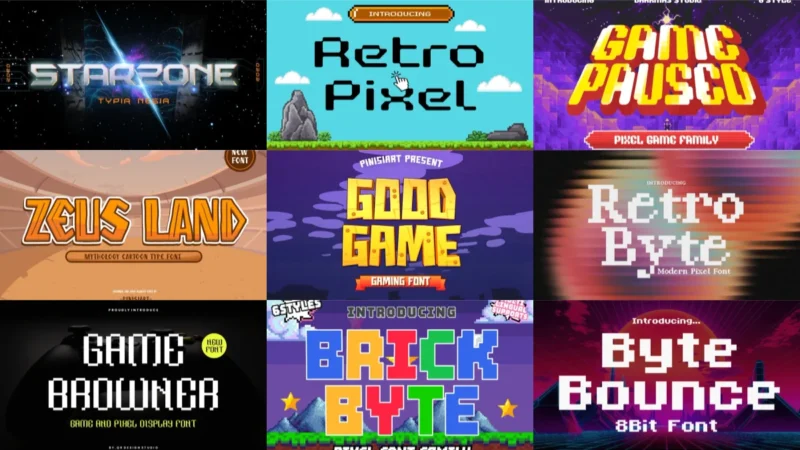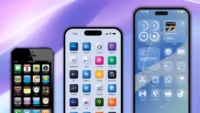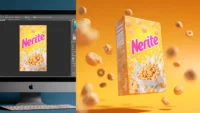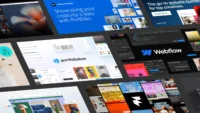In this article:
- The Best Video Game Fonts of 2025
- What Makes a Font Feel Like a Video Game?
- A Brief History of Video Game Typography
- Where to Use Video Game Fonts
- When to Avoid Video Game Fonts
- Tips for Designing with Video Game Fonts
- Creating Authentic Pixel Fonts
- Modern vs. Retro Gaming Fonts
- Common Video Game Font Questions
- Iconic Fonts from Famous Games
- The Future of Video Game Typography
- Level Complete
Press START to continue.
Those three words, flickering on a screen in bold, pixelated glory, have launched millions of adventures. And while you might not have consciously noticed it at the time, the font that delivered that message was doing some serious heavy lifting. Video game fonts aren’t just letters on a screen—they’re portals into entire worlds, mood-setters that can make your heart race or your skin crawl, and silent storytellers that communicate everything from futuristic dystopias to whimsical fantasy realms.
From the chunky 8-bit lettering that defined a generation of gamers to the sleek, cinematic typefaces gracing today’s AAA titles, video game fonts have evolved into an art form all their own. Whether you’re designing a retro-inspired indie game, creating gaming merchandise, or just want to capture that nostalgic controller-in-hand feeling in your next project, understanding video game typography is essential.
In this deep dive, we’ll explore the most iconic video game fonts, uncover what makes them so effective, and give you the tools to level up your own gaming-inspired designs. No cheat codes required—just pure typographic power-ups.
The Best Video Game Fonts of 2025
Not all video game fonts are created equal. Some capture that perfect retro arcade vibe, while others bring modern gaming aesthetics to life. Here’s my curated list of the most epic video game fonts you need to try:
Video Game Font
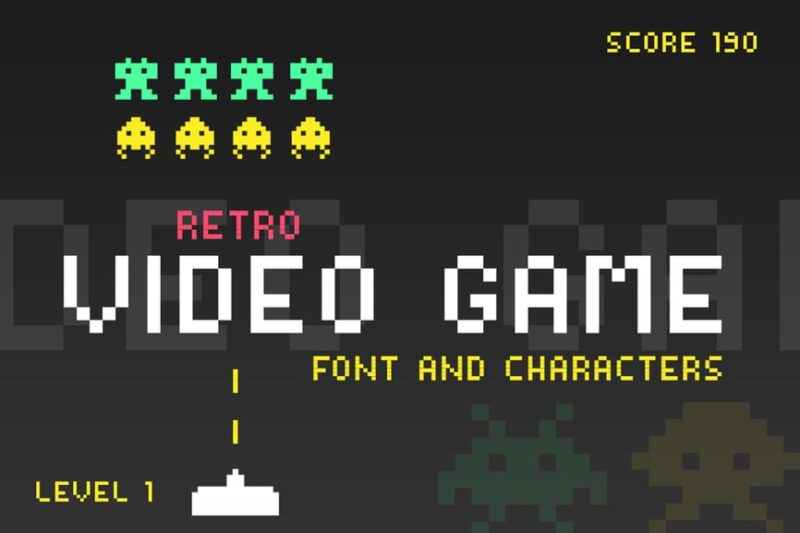
This sans-serif video game font captures the essence of 8-bit and 80s gaming aesthetics. Perfect for designers looking to evoke nostalgia in retro-inspired game interfaces or promotional materials, it offers a versatile option for various video game font applications.
Game Over – Modern Pixel Style Font
![]()
Game Over is a modern take on classic pixel-style video game fonts. Its sans-serif design with decorative elements makes it ideal for arcade-themed projects or contemporary games seeking a retro pixel art feel in their typography.

Get 300+ Fonts for FREE
Enter your email to download our 100% free "Font Lover's Bundle". For commercial & personal use. No royalties. No fees. No attribution. 100% free to use anywhere.
Billy
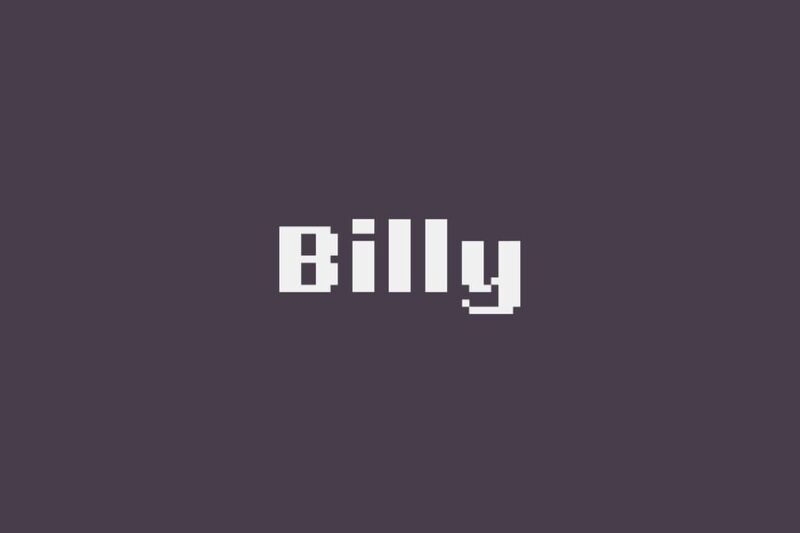
Billy combines 8-bit aesthetics with a typewriter-inspired look in this sans-serif font. It’s an excellent choice for video game fonts in projects that blend retro gaming charm with a slight literary twist, perfect for narrative-driven games or game marketing materials.
Game Paused – Modern Tech Futuristic
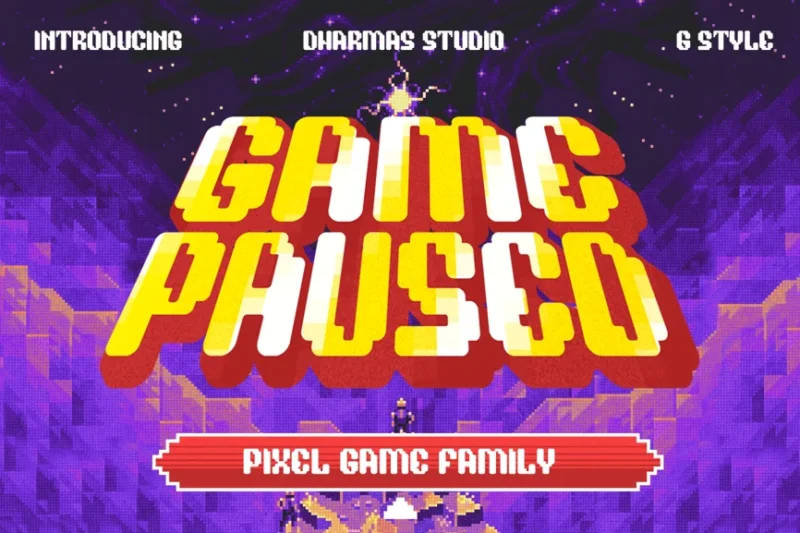
This futuristic sans-serif font is tailored for modern video game interfaces. With its tech-inspired design and pixel elements, it’s ideal for sci-fi games or cutting-edge UI designs that require a sleek, forward-looking video game font.
Retro Byte – Vintage 8Bit Video Game Font
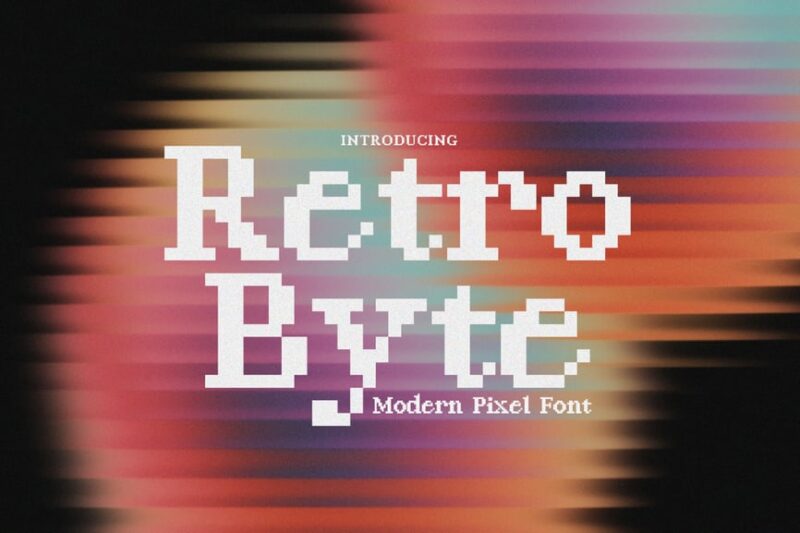
Retro Byte perfectly encapsulates the charm of vintage 8-bit video game fonts. This decorative typeface is a go-to choice for designers aiming to recreate authentic retro gaming experiences or add a nostalgic pixel art touch to modern game designs.
Retro Pixel Font Style
![]()
This decorative pixel font style is a classic choice for video game fonts. It offers designers a versatile option for creating authentic retro game aesthetics or adding a pixelated charm to modern game interfaces and marketing materials.
Bit-32 – Retro Gaming Font
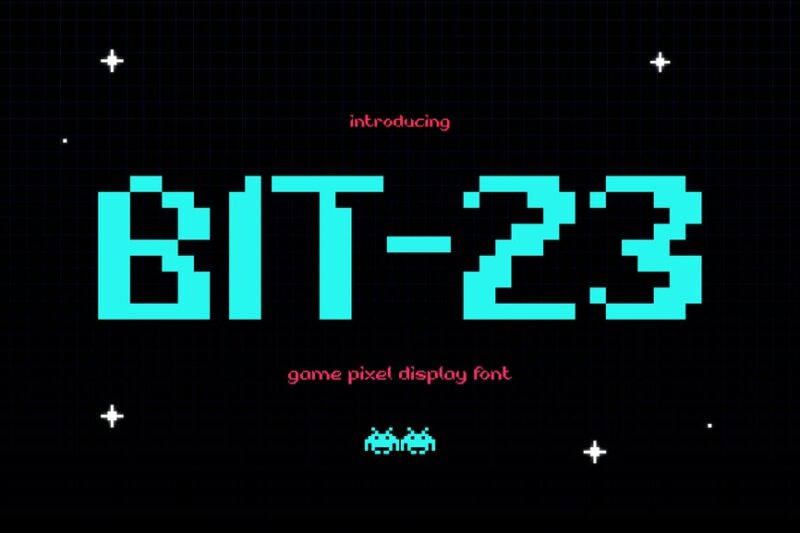
Bit-32 is a decorative font that pays homage to 8-bit era video game fonts. Its retro gaming style makes it perfect for designers working on throwback games, arcade-inspired projects, or any design that aims to evoke nostalgia for classic gaming.
ByteBounce – 8Bit Pixel Font
![]()
ByteBounce offers a lively take on 8-bit pixel video game fonts. This decorative typeface is ideal for creating energetic, retro-inspired game interfaces or promotional materials that capture the fun and excitement of classic arcade games.
Tiny Timmy

Tiny Timmy is a unique sans-serif font that blends digital clock and glitch aesthetics. While not a traditional video game font, it offers designers an interesting option for creating futuristic or cyberpunk-inspired game interfaces and marketing materials.
Good Game – Gaming Kids Font
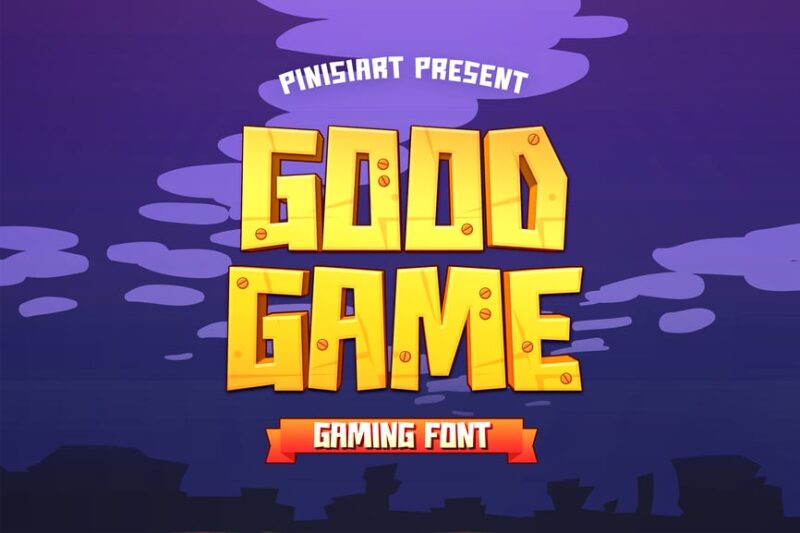
Good Game is a playful sans-serif font designed with young gamers in mind. This arcade-inspired video game font is perfect for children’s games, educational gaming content, or any project targeting a younger audience in the gaming world.
Rufing
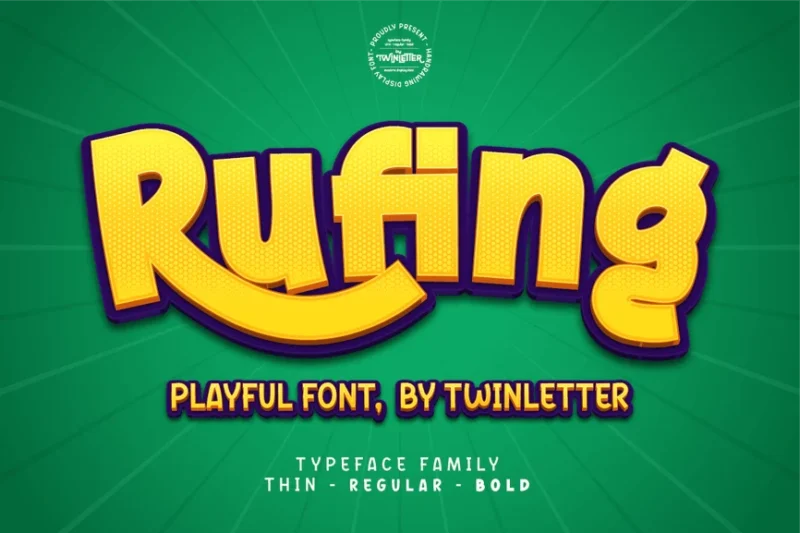
Rufing is a decorative sans-serif font with comic-inspired elements. While not strictly a video game font, its playful style makes it suitable for casual games, game marketing materials, or projects that aim to blend gaming with a lighthearted, comic book aesthetic.
Gomen Demon – Game & Pixel Font
![]()
Gomen Demon is a unique pixel-based video game font with Asian-inspired and devilish elements. This decorative typeface is perfect for designers working on games with supernatural themes or East Asian aesthetics, offering a distinctive look for game interfaces and promotional materials.
Arcade Quest – 8Bit Font
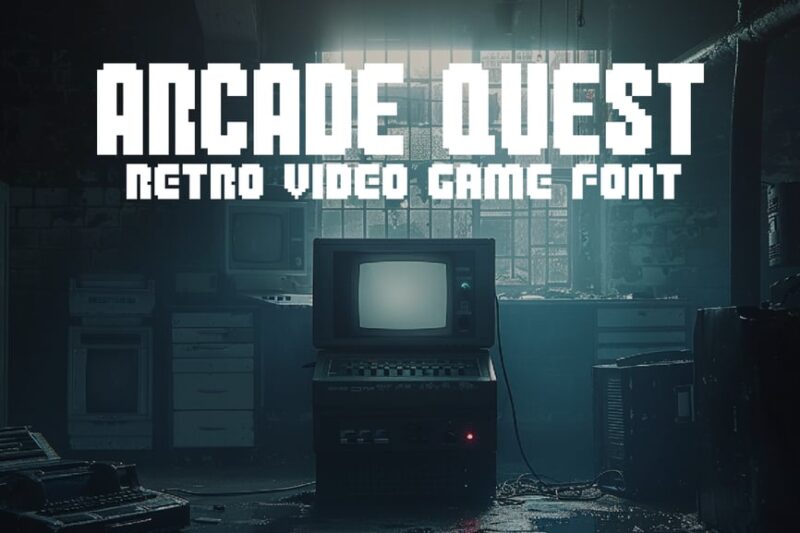
Arcade Quest captures the essence of classic 8-bit video game fonts. This decorative pixel typeface is ideal for designers aiming to recreate authentic arcade game aesthetics or add a retro gaming touch to modern projects, perfect for both game interfaces and marketing materials.
Cyber Soulja
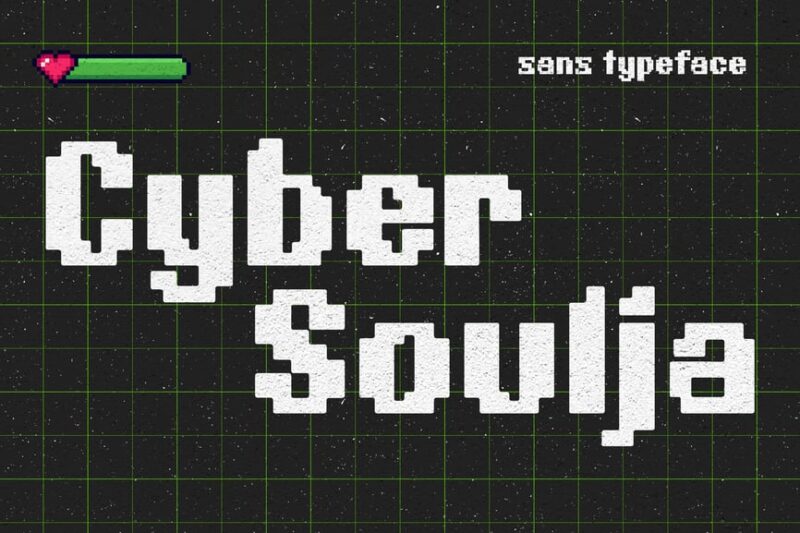
Cyber Soulja blends pixel art with glitch aesthetics in this decorative font. While not a traditional video game font, it’s an excellent choice for cyberpunk-themed games or projects that want to combine retro gaming visuals with a modern, edgy twist.
Starzone – SciFi Game Font
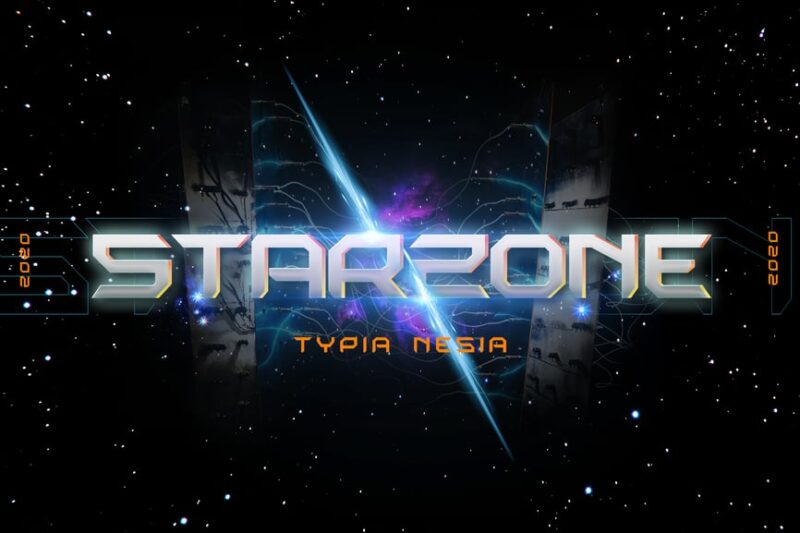
Starzone is a sci-fi inspired sans-serif video game font with unique symbols. It’s perfect for space-themed games or futuristic gaming projects, offering designers a sleek and otherworldly typeface for game interfaces and promotional materials.
Game Browner – Pixel & Glitch Font
![]()
Game Browner combines pixel art with glitch effects and Art Deco influences. This decorative video game font is ideal for designers looking to create unique, visually striking game interfaces or marketing materials that blend retro and modern aesthetics.
Greek Freak – Gaming Font
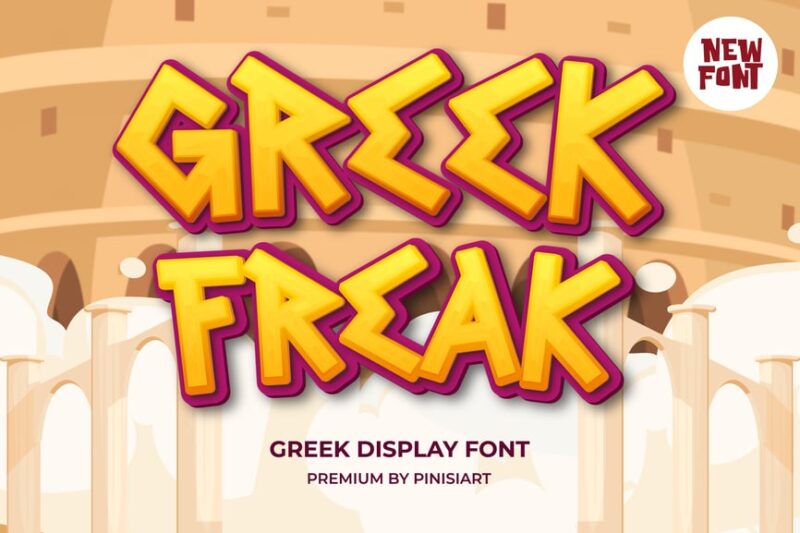
Greek Freak is a decorative video game font with a distinct Hellenic flavor. It’s perfect for games with Greek mythology themes or designers looking to add a touch of ancient world aesthetics to their gaming projects, offering a unique twist on traditional gaming typography.
Game Font – Beachwave
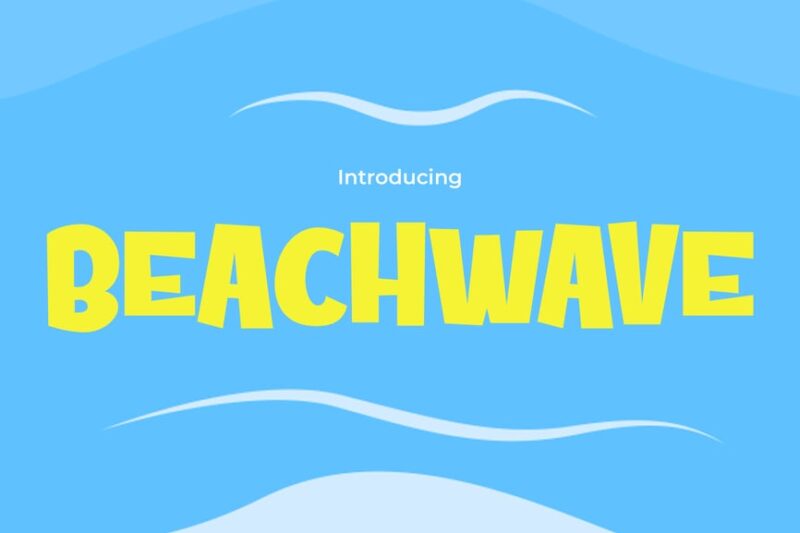
Beachwave is a sans-serif video game font that evokes a laid-back, coastal vibe. Ideal for beach or surf-themed games, this typeface offers designers a refreshing option for creating relaxed, summery game interfaces or promotional materials with a gaming twist.
Zeus Land – Gaming font
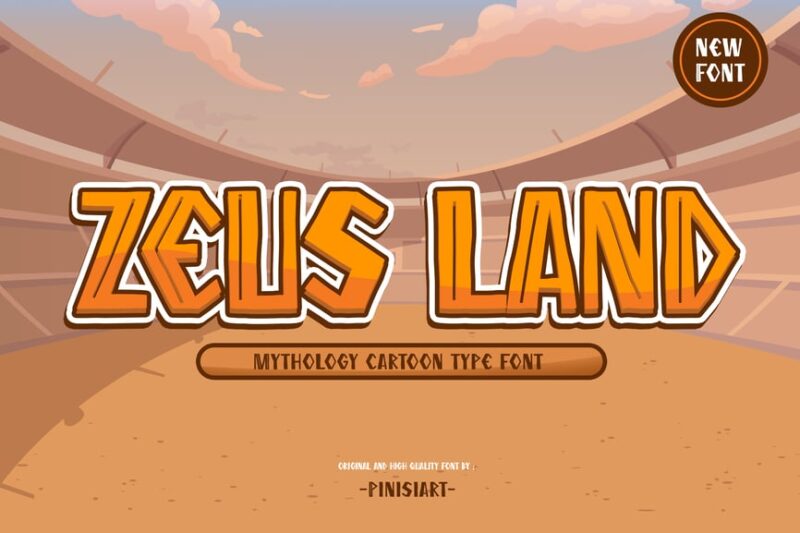
Zeus Land is a sans-serif video game font with Greek-inspired elements and a wavy design. Perfect for mythology-themed games or projects that blend ancient world aesthetics with modern gaming, it offers designers a unique typeface for creating distinctive game interfaces and marketing materials.
Quick Dog – Gaming Kids Font
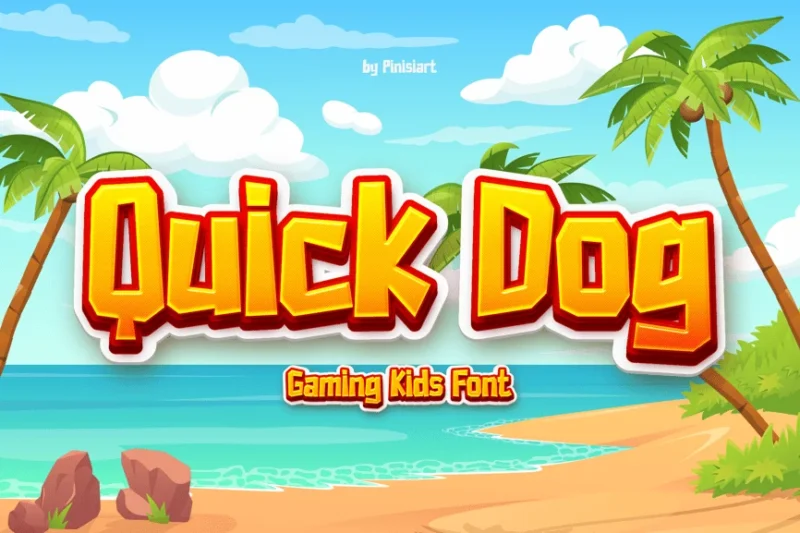
Quick Dog is a playful sans-serif video game font designed with young gamers in mind. This child-friendly typeface is perfect for educational games, kids’ gaming apps, or any project targeting a younger audience in the gaming world, offering a fun and approachable look.
High Game Font
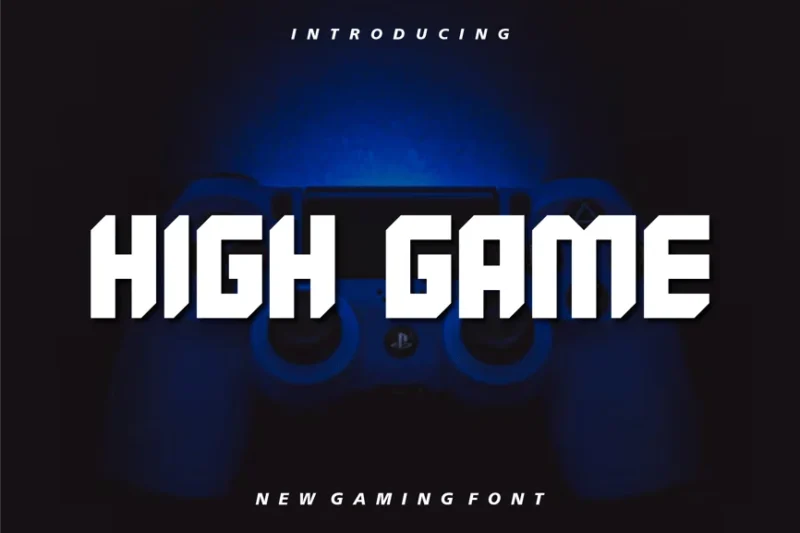
High Game Font is a bold sans-serif typeface designed specifically for video games. It offers designers a versatile option for creating impactful game logos, headers, or in-game text that stands out and captures the excitement of gaming.
Arcadia – Scifi Game Font
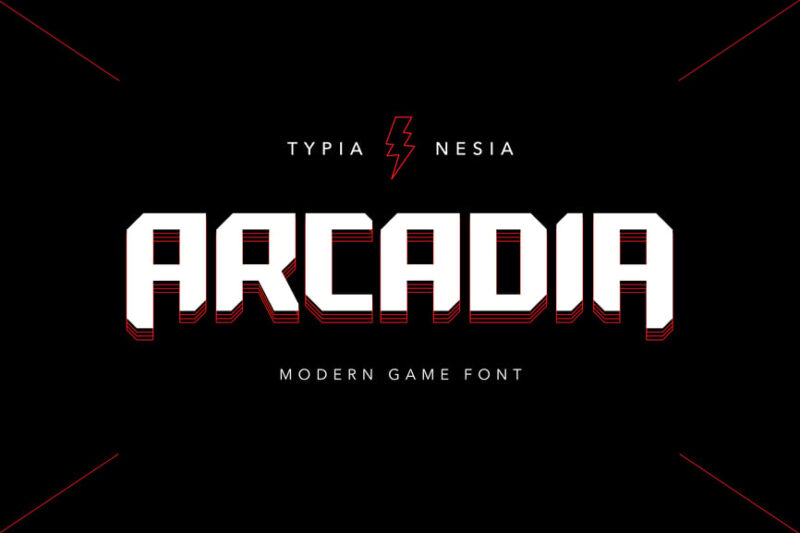
Arcadia is a sci-fi inspired video game font that combines sans-serif elements with decorative symbols. Perfect for futuristic or military-themed games, this typeface offers designers a unique option for creating immersive game interfaces and eye-catching promotional materials.
Sygmante – Modern Sci-Fi Display Font
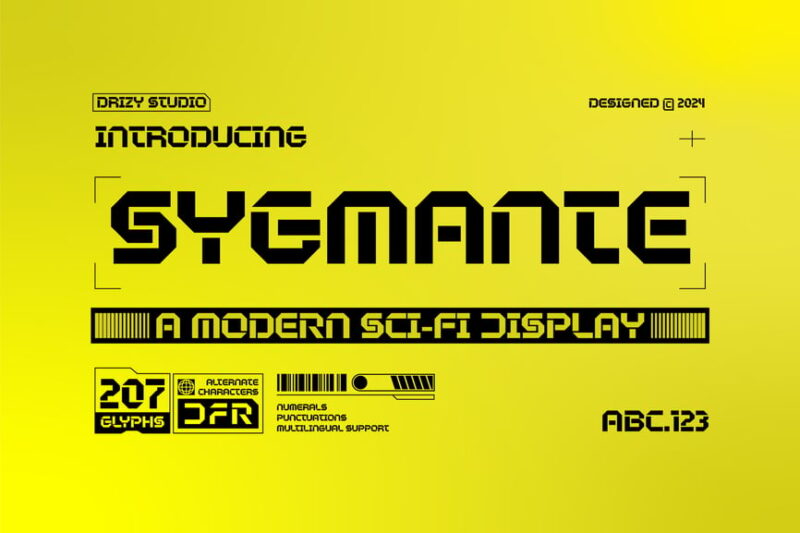
Sygmante is a modern sans-serif font with a strong sci-fi and cyberpunk influence. While not exclusively a video game font, it’s an excellent choice for futuristic game interfaces, military-themed games, or any project that aims to create a bold, high-tech gaming aesthetic.
Over Pixel
![]()
Over Pixel is a sans-serif video game font that embraces the charm of pixel art. It’s perfect for designers looking to create retro-inspired game interfaces or add a classic gaming touch to modern projects, offering a versatile option for various pixel-based game designs.
Brick Byte
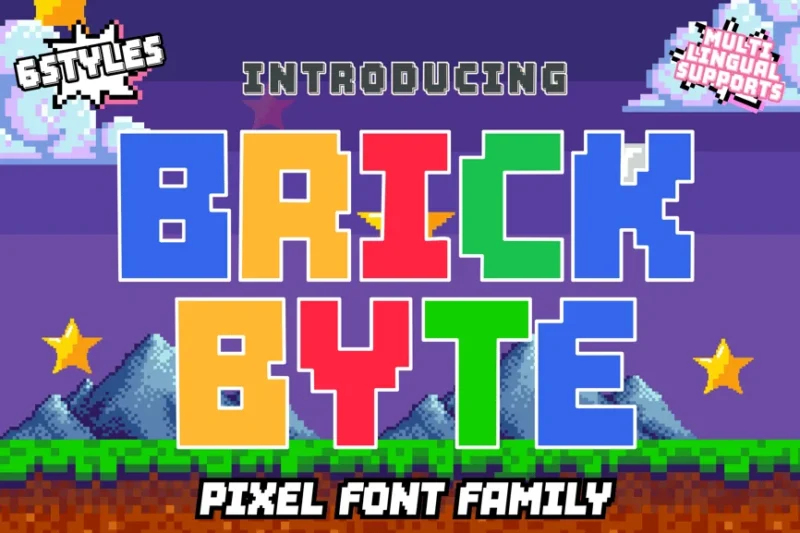
Brick Byte is a sans-serif font that captures the essence of 8-bit and arcade gaming. This video game font is ideal for designers aiming to recreate classic gaming aesthetics or add a retro touch to modern game interfaces and promotional materials.
Broken Console
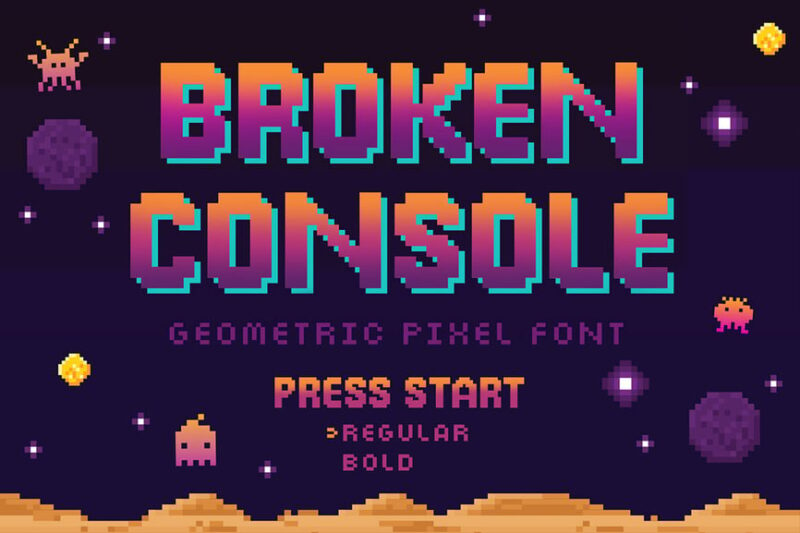
Broken Console is a decorative font that blends digital clock aesthetics with video game-inspired elements. It’s perfect for creating unique game interfaces or marketing materials that evoke a sense of retro gaming technology with a glitchy, edgy twist.
Pixel Quest – Pixel Font
![]()
Pixel Quest is a decorative video game font that embodies classic pixel art aesthetics. It’s an excellent choice for designers working on retro-inspired games or projects that aim to capture the nostalgia of early video game visuals in their typography.
Spenbeb Game Cartoon Font
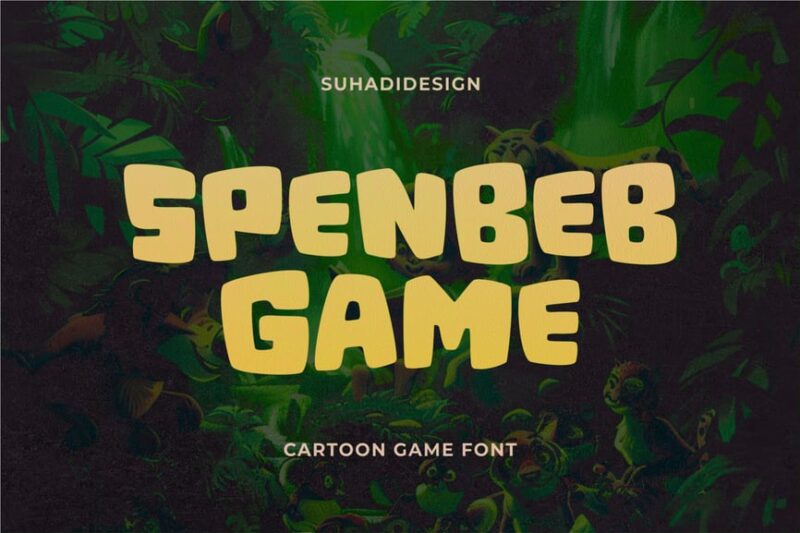
Spenbeb is a playful, cartoon-inspired video game font. This decorative typeface is perfect for casual games, children’s gaming content, or any project that aims to create a fun, lighthearted gaming atmosphere through its typography.
Synth Pixel – Y2K Game Font
![]()
Synth Pixel is a decorative video game font that blends Y2K aesthetics with 8-bit pixel art. It’s ideal for designers working on retro-futuristic game projects or those looking to capture the unique visual style of early 2000s gaming in their typography.
Retrobit Pixel Decorative Display Font
![]()
Retrobit is a decorative pixel display font that pays homage to 8-bit gaming aesthetics. This video game font is perfect for creating authentic retro game interfaces or adding a nostalgic touch to modern gaming projects and promotional materials.
Tallbit
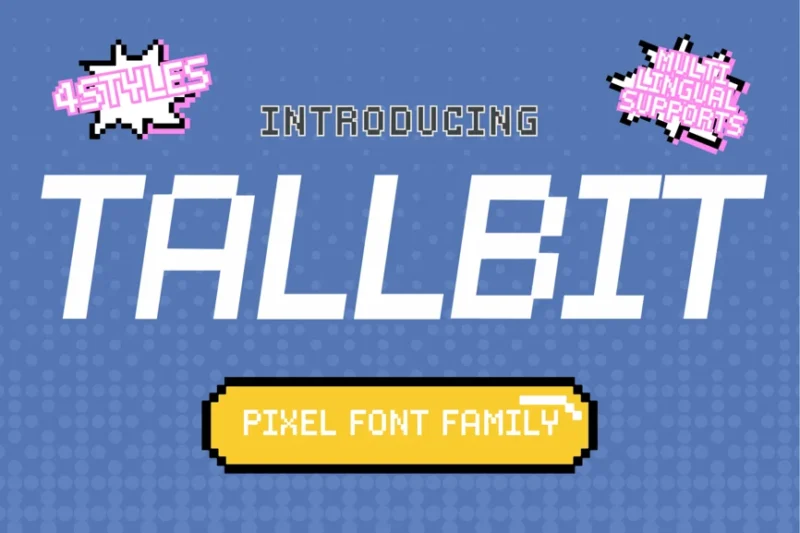
Tallbit is a decorative font that combines 8-bit aesthetics with a unique vertical emphasis. This distinctive video game font is ideal for creating eye-catching game logos, headers, or in-game text that stands out while maintaining a classic arcade feel.
Thertole
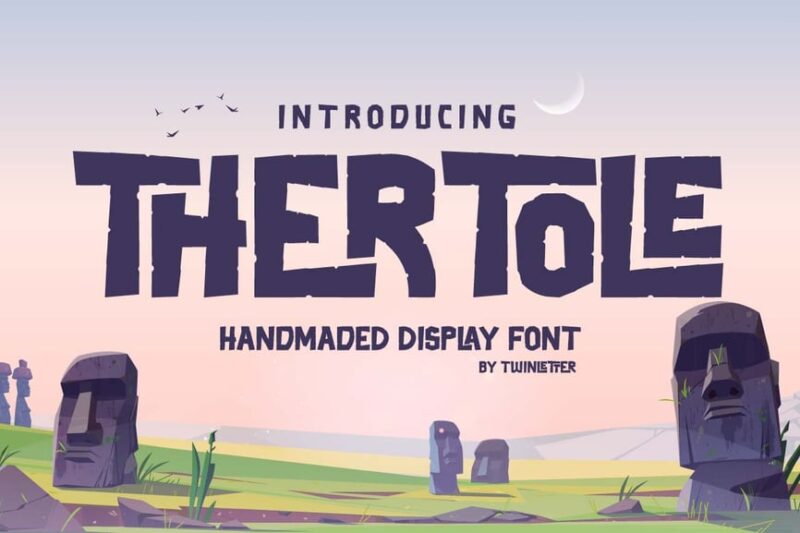
Thertole is a decorative sans-serif font with royal and cinematic influences. While not strictly a video game font, its distinctive style makes it suitable for creating elegant game logos or text for fantasy-themed games that require a touch of regal sophistication.
Scorn – Pixel Font
![]()
Scorn is a decorative pixel font that brings a darker edge to video game typography. This typeface is perfect for horror or dystopian-themed games, offering designers a unique option for creating atmospheric game interfaces and promotional materials with a retro pixel art twist.
Pixel Impact – 8Bit Font
![]()
Pixel Impact is a bold, decorative 8-bit video game font. It’s ideal for creating high-impact game logos, headers, or in-game text that captures the essence of classic gaming while offering a modern, dynamic feel to retro-inspired projects.
Gothic Byte – Blackletter 8Bit Typeface
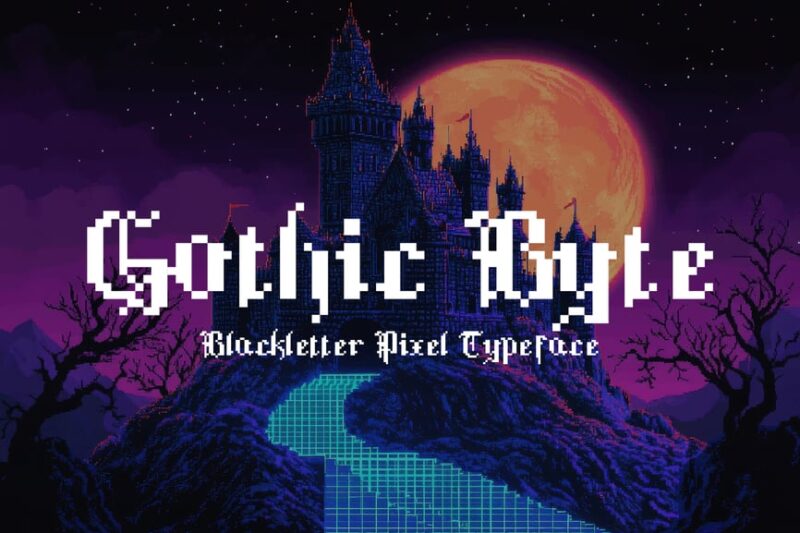
Gothic Byte is a unique video game font that blends blackletter typography with 8-bit aesthetics. This decorative typeface is perfect for gothic or medieval-themed games, offering designers a distinctive way to combine classic gaming visuals with a touch of historical elegance.
Nordic Light – Gaming Font
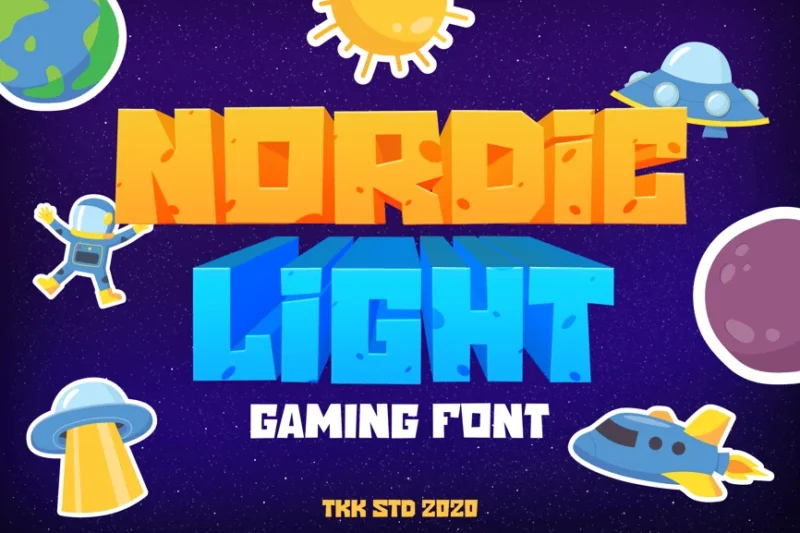
Nordic Light is a sans-serif gaming font with a 3D text effect. This video game font is ideal for creating bold, eye-catching game logos or headers, particularly suited for projects with Norse or Viking themes that require a strong, impactful typographic presence.
Game Rusax – Pixel Font
![]()
Game Rusax is a decorative pixel font that brings a unique twist to video game typography. This typeface is perfect for creating distinctive game interfaces or promotional materials, offering designers a fresh take on retro gaming aesthetics with its pixel-based design.
Golem – Pixel Font
![]()
Golem is a decorative pixel font that captures the essence of 8-bit video game aesthetics. This typeface is ideal for designers looking to create authentic retro game interfaces or add a classic gaming touch to modern projects, perfect for pixel art-inspired games.
Coin Ding Dong
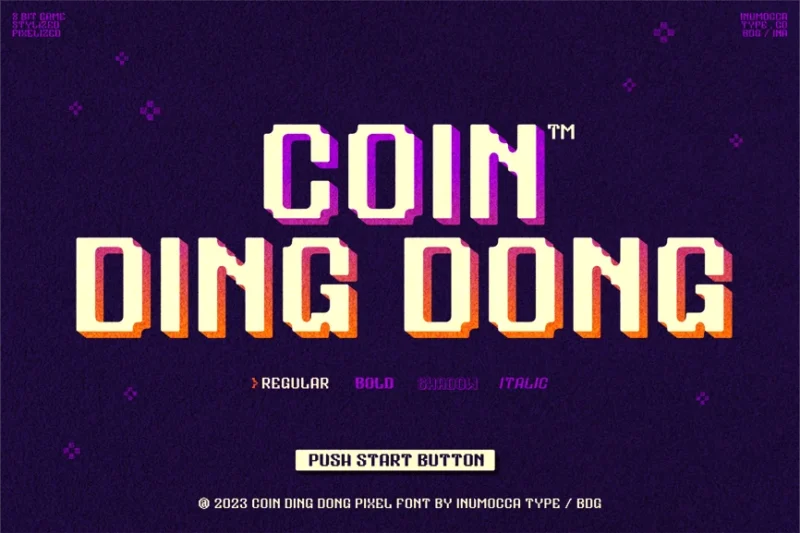
Coin Ding Dong is a decorative font that blends 8-bit aesthetics with digital clock elements. While not strictly a video game font, it offers a unique option for creating game interfaces or promotional materials that evoke a sense of classic arcade gaming and retro technology.
Sport Pixel – Modern Pixel Font
![]()
Sport Pixel is a modern take on pixel-based video game fonts. This decorative typeface combines classic gaming aesthetics with a contemporary twist, making it perfect for sports-themed games or projects that aim to blend retro and modern design elements in their typography.
Space Game
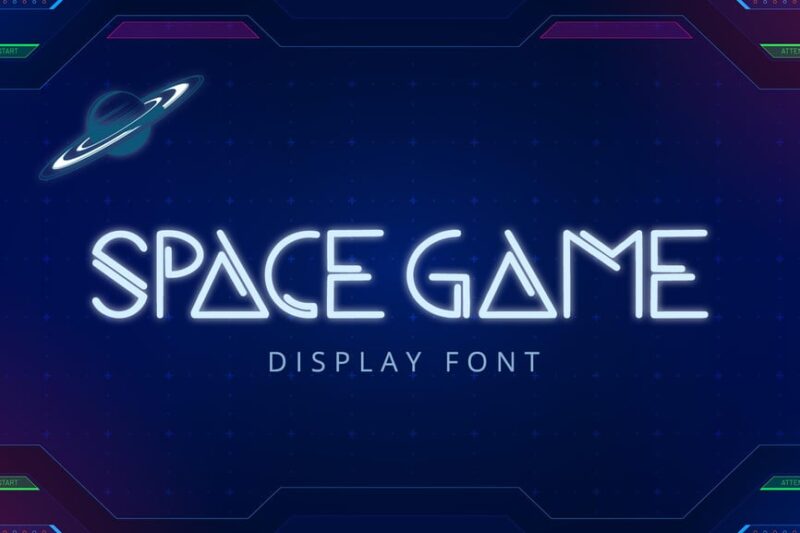
Space Game is a decorative font with unique symbols, designed specifically for space-themed video games. This typeface offers designers a versatile option for creating immersive game interfaces, logos, or promotional materials that capture the excitement and mystery of space exploration in gaming.
What Makes a Font Feel Like a Video Game?
What is it about certain fonts that instantly transport us back to dimly lit arcades or late-night gaming sessions? Video game fonts share several key characteristics that trigger those nostalgic, adrenaline-pumping feelings:
Pixel-Perfect Construction
The most recognizable video game fonts are pixel fonts—typefaces built on a grid of squares, just like the sprites and characters in classic 8-bit and 16-bit games. These fonts weren’t just a stylistic choice; they were born from necessity. Early gaming systems had severe limitations, with screens that could only display a fixed grid of pixels.
Designers had to work within these constraints, crafting letters that were readable at tiny sizes while using minimal memory. The result? Those iconic blocky letterforms that define retro gaming aesthetics. Even today, when we could use any font imaginable, pixel fonts remain synonymous with gaming because they tap into that collective nostalgia.
Bold, High-Contrast Strokes
Video game fonts need to be readable on screens—often quickly, in the heat of gameplay. That’s why you’ll notice most gaming fonts feature thick, bold letterforms with high contrast. There’s no room for delicate serifs or subtle gradations when a player needs to read “GAME OVER” in a split second.
This boldness also conveys action, urgency, and excitement. Thin, elegant fonts might work for a fashion magazine, but video games demand typography that matches their high-energy nature.
Geometric and Angular Shapes
Many modern video game fonts lean into geometric, angular letterforms that feel technical, futuristic, or mechanical. Think sharp corners, dramatic diagonals, and architectural precision. These fonts evoke the digital nature of gaming itself—they look like they were generated by a computer because, well, they were.
Angular fonts work particularly well for sci-fi games, military shooters, racing games, and any title that wants to feel cutting-edge and technologically advanced.
Playful Character Variations
On the flip side of geometric precision, many video game fonts—especially those for casual, mobile, or kid-friendly games—embrace playful irregularity. These fonts might feature bouncy baselines, characters at slightly different heights, or whimsical embellishments that make them feel fun and approachable.
This playfulness signals to players that the game is meant to be entertaining and lighthearted rather than intensely competitive or serious.
A Brief History of Video Game Typography
The evolution of video game fonts is intrinsically tied to the technological advancement of gaming hardware. Let’s take a quick journey through the eras:
The 8-Bit Era (Late 1970s – Late 1980s)
In the beginning, there were pixels—and not many of them. Early consoles like the Atari 2600 and Nintendo Entertainment System (NES) could only display fonts at extremely low resolutions. Designers worked with grids as small as 5×7 pixels per character, creating chunky, blocky letters that were barely legible but got the job done.
Despite these limitations, designers showed remarkable creativity. The fonts from this era have become cultural touchstones, instantly recognizable to anyone who grew up with classic gaming.
The 16-Bit Era (Late 1980s – Mid 1990s)
Systems like the Super Nintendo and Sega Genesis brought higher resolutions and more colors, allowing for more refined typography. Fonts could now include subtle details, anti-aliasing (smoothing of jagged edges), and even pseudo-3D effects with shadows and outlines.
This era saw the birth of many iconic game franchises, each with distinctive typography that became part of their brand identity.
The 3D Revolution (Mid 1990s – Early 2000s)
As gaming moved into three dimensions with the PlayStation, Nintendo 64, and beyond, typography became less constrained by pixel grids. Designers could now use traditional fonts or create custom typefaces with smooth curves and complex details.
However, many games still embraced pixelated fonts in their menus and UI, creating an interesting fusion of 3D graphics with retro typography.
Modern Era (Mid 2000s – Present)
Today’s games can use virtually any typography imaginable, from elaborate custom display fonts to clean system fonts. Yet interestingly, pixel fonts and retro gaming aesthetics have experienced a massive resurgence, particularly in the indie game scene.
Modern designers often deliberately choose retro fonts to tap into nostalgia, or they create new fonts that reference gaming history while adding contemporary polish.
Where to Use Video Game Fonts
Video game fonts aren’t just for actual video games (though obviously, they excel there). Their distinctive energy and nostalgic appeal make them versatile for many applications:
Game Design and UI
This is the obvious home for video game fonts. Whether you’re creating menus, HUDs (heads-up displays), dialogue boxes, or title screens, the right font establishes your game’s visual identity and enhances the player experience.
Pixel fonts work beautifully for retro-inspired games, while modern geometric fonts suit contemporary titles. The key is ensuring readability—players need to process information quickly during gameplay.
Gaming Merchandise
T-shirts, posters, stickers, pins, and other gaming merchandise practically demand video game fonts. Whether you’re creating designs for a specific game or general gaming culture references, these fonts instantly signal “gamer” to your target audience.
Retro pixel fonts work especially well on apparel, as they’re both eye-catching and simple enough to print cleanly.
Streaming Graphics and Overlays
Streamers and content creators need fonts that look good on camera and maintain the gaming aesthetic. Video game fonts are perfect for stream overlays, subscriber alerts, donation notifications, and channel branding.
Bold, high-contrast fonts ensure your text is readable even at lower streaming qualities or on mobile devices.
Gaming Events and Esports
Tournament posters, event websites, team jerseys, and arena displays all benefit from video game fonts. These typefaces convey the competitive energy and digital nature of esports while maintaining professionalism.
Angular, futuristic fonts often work well for competitive gaming contexts, projecting intensity and technical precision.
Retro-Themed Designs
Anything aiming for that ’80s or ’90s nostalgia—whether related to gaming or not—can benefit from pixel fonts and retro gaming typography. These fonts have become shorthand for an entire era’s aesthetic.
Bars with arcade cabinets, vintage tech companies, or any brand wanting to tap into millennial and Gen X nostalgia can effectively use gaming-inspired fonts.
YouTube Thumbnails and Social Media
Video game fonts excel at grabbing attention in crowded social feeds. Their bold, distinctive letterforms stand out even at small sizes on mobile devices.
Gaming content creators, tech channels, and entertainment accounts frequently use these fonts to boost click-through rates and maintain consistent branding.
When to Avoid Video Game Fonts
While video game fonts are incredibly versatile, there are definitely contexts where they’re not the best choice:
Professional Corporate Settings
Unless you’re in the gaming industry, video game fonts probably won’t fly in business presentations, annual reports, or corporate websites. They’re simply too casual and pop-culture-specific for most professional environments.
Stick with clean sans-serifs or professional serifs for traditional business contexts.
Long-Form Reading
Pixel fonts and display-heavy gaming fonts are not designed for body text. They work brilliantly for headlines, titles, and short bursts of text, but trying to read a full article or book in a pixel font would be exhausting.
If you’re using video game fonts, limit them to headers, callouts, and other display purposes while using a readable text font for paragraphs.
Formal or Serious Subjects
The playful, nostalgic energy of video game fonts makes them inappropriate for serious topics like healthcare, legal services, funeral homes, or academic institutions (unless perhaps in a computer science department).
These fonts carry cultural associations with entertainment and leisure that can undermine serious messaging.
Elegant or Luxury Branding
If you’re selling high-end fashion, luxury real estate, fine dining, or premium services, video game fonts will clash dramatically with the sophisticated image you’re trying to project.
Save the pixel fonts for contexts that embrace fun and nostalgia rather than elegance and refinement.
Tips for Designing with Video Game Fonts
Ready to incorporate video game fonts into your projects? Here are some pro tips to make your designs truly epic:
Match the Font to the Game Genre
Different gaming genres have distinct typographic conventions. Horror games often use distressed, creepy fonts. Racing games lean toward sleek, italicized speedster fonts. Fantasy RPGs embrace ornate, medieval-inspired typefaces. Puzzle games use clean, friendly fonts.
Study successful games in your genre and notice the typography trends. This ensures your font choices feel authentic rather than generic.
Layer and Outline for Readability
One trick used extensively in gaming: add outlines or drop shadows to ensure text remains readable regardless of the background. Games feature constantly changing environments, so UI text needs to stand out in any situation.
A white font with a black outline, or vice versa, remains readable whether it’s over a light sky or dark dungeon.
Maintain Hierarchy
Even within a single gaming project, you’ll likely need multiple fonts or font weights to establish hierarchy. Title screens need the biggest impact, menu items need clarity, body text needs readability, and subtle UI elements need to stay unobtrusive.
Use your boldest, most stylized video game font sparingly for maximum impact, then support it with more restrained choices.
Consider Animation Potential
Gaming fonts are often animated—appearing letter by letter, glitching, flashing, or moving. When choosing a font, think about how it might look in motion. Overly complex fonts can become muddy when animated, while clean geometric fonts often animate beautifully.
Test at Multiple Sizes
Video game fonts need to work at various sizes—from tiny UI text to massive title screens. Some fonts look amazing at large sizes but become illegible when small, or vice versa.
Always test your font choices at their intended display sizes before committing to them.
Add Gaming Elements
Enhance your video game typography with gaming-inspired design elements: pixel art borders, controller graphics, health bars, achievement badges, or “Press Start” buttons. These contextual elements reinforce the gaming aesthetic.
Embrace Color
Video games are colorful, and your typography can be too! Don’t be afraid to use bright, saturated colors or even gradients and glow effects. Gaming fonts can handle bold color treatments that might overwhelm more traditional typefaces.
Creating Authentic Pixel Fonts
If you’re creating your own pixel font or want to use one effectively, here are some technical considerations:
Stick to the Grid
True pixel fonts are built on a strict pixel grid—every element aligns perfectly to square pixels. Even a single anti-aliased edge can break the authentic retro feel.
When working with pixel fonts in design software, make sure to turn off anti-aliasing and align everything to whole pixel values.
Consider the Resolution
Historical pixel fonts were designed for specific resolutions. An 8×8 pixel font has a different character (pun intended) than a 16×16 font. Lower resolutions feel more authentically retro but sacrifice some readability.
Choose your resolution based on how retro you want to appear and how much text you need to display.
Maintain Consistent Weight
In pixel fonts, letterforms should have consistent stroke widths. If your vertical strokes are 2 pixels wide, your horizontal strokes should generally match. Inconsistency looks amateurish.
Mind the Gaps
Spacing (or “kerning”) is crucial in pixel fonts. Too tight, and letters blur together. Too loose, and words feel disconnected. Most pixel fonts work best with at least one pixel of space between characters.
Modern vs. Retro Gaming Fonts
The gaming world now encompasses two distinct typographic approaches, each serving different purposes:
Retro/Pixel Fonts
These are the nostalgic favorites—blocky, grid-based fonts that reference gaming’s early days. They work beautifully for indie games, retro-themed projects, and anything targeting gamers who grew up in the ’80s and ’90s.
Retro fonts convey authenticity in gaming culture and tap into powerful nostalgia. However, they can feel dated or limiting if you’re trying to showcase cutting-edge innovation.
Modern/Geometric Fonts
Contemporary gaming fonts tend toward sleek, angular, futuristic designs. They feature smooth curves (not pixel-bound), often incorporate sci-fi elements, and project a high-tech, competitive aesthetic.
Modern gaming fonts work better for esports, AAA game titles, streaming platforms, and contexts where you want to emphasize current relevance rather than nostalgia.
The best approach? Consider your audience and message. Sometimes mixing both styles can be effective—use retro fonts for charm and nostalgia, but balance them with modern fonts for credibility and contemporary appeal.
Common Video Game Font Questions
Let’s address some frequently asked questions about video game fonts:
What font do most video games use?
There’s no single dominant font, as games span countless genres and styles. However, many games use custom typefaces designed specifically for them. Popular generic choices include various pixel fonts for retro games, or clean sans-serifs like Helvetica or Futura for modern titles. Many successful games invest in custom typography to establish unique brand identity.
What is the pixelated game font called?
Pixelated fonts are generally called “pixel fonts” or “bitmap fonts.” Specific popular pixel fonts include Press Start 2P (inspired by NES), Pixelify Sans, Early GameBoy, and VCR OSD Mono. Each has slightly different characteristics reflecting various gaming eras and systems.
Are pixel fonts free to use?
Many pixel fonts are free for personal use, but commercial licensing varies widely. Some are completely free even for commercial projects, while others require purchasing a license. Always check the specific font’s license before using it in commercial work to avoid legal issues.
How do I make text look like a video game?
Beyond choosing a gaming font, add elements like: pixel-perfect alignment (disable anti-aliasing), high contrast colors, thick outlines or drop shadows, slight screen scan line effects, and gaming UI elements like health bars or button prompts. The font alone won’t create the effect—it’s the overall treatment that sells the gaming aesthetic.
What’s the difference between 8-bit and 16-bit fonts?
These terms reference the gaming console generations. 8-bit fonts (NES era) are typically blockier and simpler, often with a maximum resolution around 8×8 pixels per character. 16-bit fonts (Super Nintendo/Genesis era) allowed for more detail, smoother curves, and subtle gradations, though still pixel-based. 16-bit fonts feel slightly more refined while maintaining retro charm.
Iconic Fonts from Famous Games
Some games have such distinctive typography that their fonts become cultural icons in their own right. While many of these are proprietary and not available for public use, understanding what makes them effective can inform your own font choices:
The bold, blocky lettering of classic arcade games like Pac-Man and Space Invaders defined an era. Mario games have consistently used friendly, rounded fonts that feel approachable and fun. The Legend of Zelda series embraces adventurous, fantasy-inspired typography. Minecraft’s squared, blocky font perfectly matches its voxel-based gameplay. The Last of Us uses distressed, gritty fonts that convey post-apocalyptic atmosphere.
Study the typography of your favorite games. Notice how the fonts support the game’s theme, enhance readability during gameplay, and contribute to overall brand recognition. These lessons apply whether you’re designing an actual game or simply capturing gaming vibes in other projects.
The Future of Video Game Typography
Where is video game typography heading? While we can’t predict with certainty, several trends are emerging:
Variable Fonts
Variable font technology allows a single font file to contain multiple variations, letting designers adjust weight, width, and other attributes on the fly. This could revolutionize game UI, allowing text to dynamically adapt to different contexts—getting bolder during intense moments, for example.
Continued Retro Revival
The nostalgia market shows no signs of slowing. Expect more games—both indie and AAA titles—to embrace retro aesthetics, either faithfully recreating vintage typography or creating modern interpretations of classic pixel fonts.
Accessibility Focus
As gaming becomes more inclusive, expect greater emphasis on accessible typography—fonts that work for players with dyslexia, vision impairments, or other needs. This might mean more games offering multiple font options or designing UI fonts with accessibility as a primary consideration.
AR and VR Typography
As augmented and virtual reality gaming grows, typography will need to adapt to three-dimensional space. Fonts might float in mid-air, wrap around objects, or respond to player gaze and gesture. This opens exciting new territory for type design.
Level Complete
Video game fonts are so much more than just letters on a screen. They’re time machines that transport us to cherished childhood memories, mood-setters that prime us for adventure, and essential building blocks of gaming culture.
Whether you’re designing an indie game that needs authentic 8-bit charm, creating merch for gaming fans, or simply want to inject some nostalgic energy into your next project, understanding video game typography gives you a powerful tool.
From the humble 5×7 pixel grids of early gaming to today’s elaborate custom typefaces, video game fonts have evolved alongside the medium itself. Yet what remains constant is their ability to instantly communicate mood, genre, and era.
So grab your favorite video game font, fire up your design software, and start creating. Your next project is waiting, and it’s not going to type itself.
Now if you’ll excuse me, I have some nostalgic gaming to do. For research purposes, of course.
What’s your favorite video game font? Drop a comment below and let me know which fonts bring back the best gaming memories!

